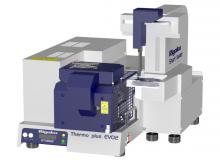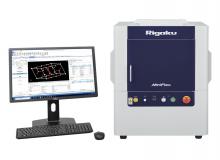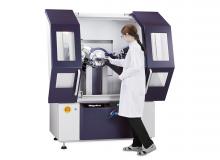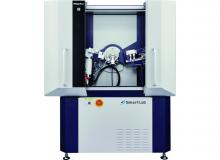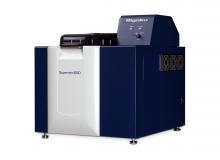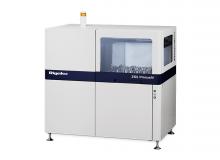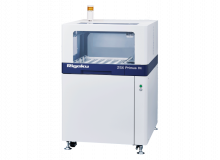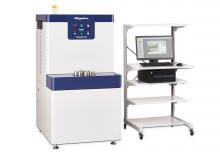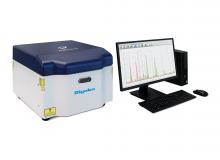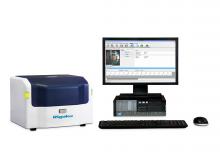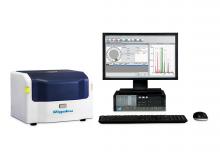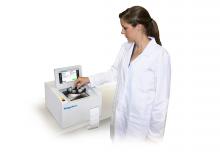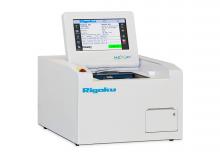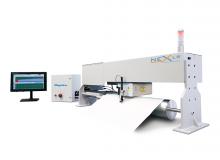
Abundance of a sample's constituent parts
Analytical chemistry can be split into two main types: qualitative and quantitative. In qualitative analysis, the object is to establish the presence of a given element, compound, or phase in a sample. Similarly, qualitative organic or biochemical analysis seeks to establish the presence of a given functional group, organic compound, or ligand in a sample. In contrast, quantitative analysis seeks to establish the amount of a given element, compound, or some other component in a sample.
In X-ray fluorescence (XRF), an electron can be ejected from its atomic orbital by the absorption of X-rays (photons) from an X-ray tube. When an inner orbital electron is ejected (middle image), a higher energy electron transfers to fill the vacancy. During this transition, a characteristic photon may be emitted (right image) that is of a unique energy for each type of atom. The number of characteristic photons per unit time (counts per second or cps) is proportional to the amount of that element in a sample. Thus, qualitative and quantitative elemental analysis is achieved by determining the energy of X-ray peaks in a sample spectrum and measuring their associated count rates.
X-ray diffraction (XRD) pattern includes information about peak positions and intensity. The peak positions are indicative of the crystal structure and symmetry of the contributing phase while peak intensities reflect the total scattering from each plane in the phase’s crystal structure, and are directly dependent on the distribution of particular atoms in the structure. Rietveld quantitative analysis is a powerful method for determining the quantities of crystalline and amorphous components in multiphase mixtures.
Application notes
The following application notes are relevant to this applicationXRD
WDXRF
EDXRF
Rigaku recommends the following systems:
Thermal Analysis
TG-DTA is a hyphenated technology generally referred to as simultaneous thermal analysis (STA).
XRD
New 6th-generation general purpose benchtop XRD system for phase i.d and phase quantification
Advanced state-of-the-art high-resolution XRD system powered by Guidance expert system software
High-performance, multi-purpose XRD system for applications ranging from R&D to quality control
WDXRF
Sequentielles WDRFA Spektrometer zur Analyse der Elemente von O bis U in Feststoffen, Flüssigkeiten und Pulvern
Sequenzielles WDRFA-Spektrometer mit hoher Leistung, Röhre oberhalb der Probe, mit ZSX Guidance Systemsoftware
High-power, tube-below, sequential WDXRF spectrometer with new ZSX Guidance expert system software
High-throughput tube below multi-channel simultaneous WDXRF spectrometer analyzes Be through U
EDXRF
High-performance, Cartesian-geometry EDXRF elemental analyzer measures Na to U in solids, liquids, powders and thin films
Low-cost EDXRF elemental analyzer measures Na to U in solids, liquids, powders and thin-films
Performance EDXRF elemental analyzer measures Na to U in solids, liquids, powders and thin-films

